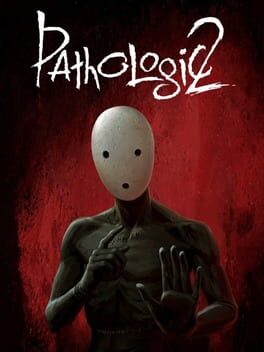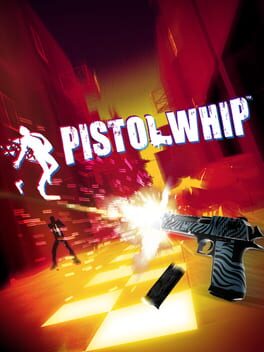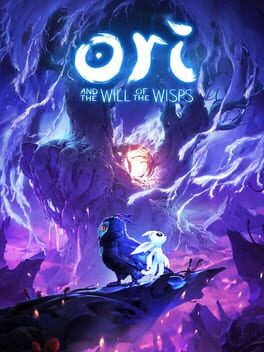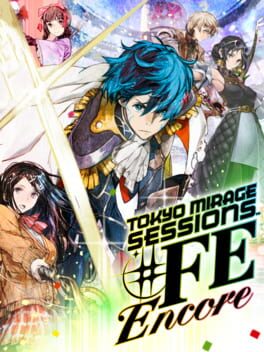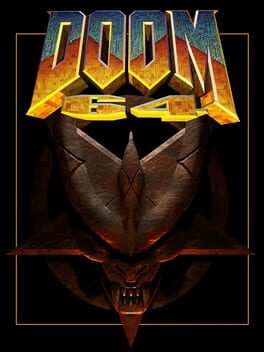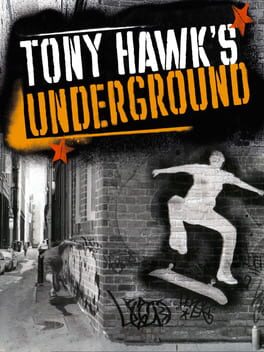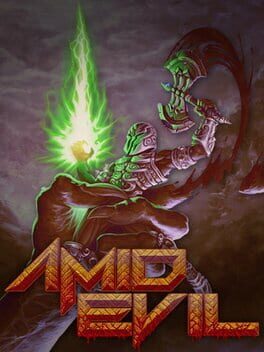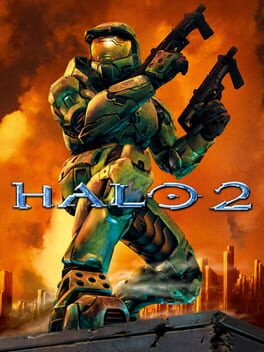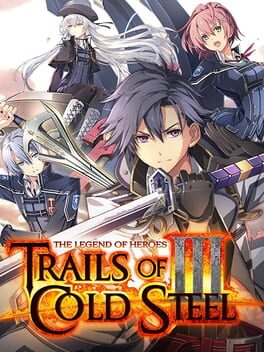Cakewalking
2019
Pathologic 2 occupied my mental state. I had a tetris-like experience with it, when at some point my dreams became Pathologic as I kept seeing the imagery of the town and contant time opression. It's such an engaging game and the most surprising thing about it is how enjoyable it was to play. If you try to break it down to basics then you can describe Patholofic 2 a routing/resource management game. Each in-game day you have several objectives to fulfill which will be sparsely spread around the town and the aim is to create the route optimized, ideally, for the best time and most conservative resource expendeture. As you come to grips with mechanics and learn the structure of the city you also learn how to circumvent cutthroat resource drain through exploration, barter, crafting and timely task fulfilment. But Pathologic wouldn't be Pathologic if it didn't try to bring you back to your knees when you start to get a handle of the whole process. The game constantly throws curveballs in your plans by changing the state of the world and even its own rules each new day of the play. This an ever-regressing world and as one of the most important people in the town you gain opportunities to slow down the degradation, but since mistakes are unavoidable you will find yourselves in situations when you have to give up something important. While struggling for your own life you'll probably have to stop pursuing a goal, or give up a chance to gain information, or maybe you'll have to bet on the life of a story character. Dialogue and character interactions themselves become the reward in such an opressive gameplay flow. The journey to unfold the nature of the cosm is full of pain, dread and sorrow, but it's also one of the most rewarding gaming experiences you can have. Masterpiece
2019
Sweet VR rhythm game that's clearly inspired by the likes of Beat Saber, but the form of physical activity it asks you to participate in I found to be pretty remarkable.
While Beat Saber, from what I played, mostly involves palm and hand movement with occasional obstacles dodging, in Pistol Whip you have to constantly juggle aiming, shooting, reloading, bullets dodging, obstacles dodging and melee attacks (titular pistol whipping) which makes it the most sweaty and intensive acyclical aerobic game I played in VR. I also appreciate that the game doesn't neccesarily force you abide to the rhythm, but awards more points to shots aligning. This approach smoothes out difficulty and learning curve (as the game is quite intensive as it is) and prepares you for high score runs once you come to sport the base activity and ready to incorporate the rhythm in your gameplay.
It's only really held back by a short track list and pretty low variety of EDM genres represented, but devs has shown the willingness to add more content with updates.
Overall? Heck of a good time, and you come a bit healthier from it.
While Beat Saber, from what I played, mostly involves palm and hand movement with occasional obstacles dodging, in Pistol Whip you have to constantly juggle aiming, shooting, reloading, bullets dodging, obstacles dodging and melee attacks (titular pistol whipping) which makes it the most sweaty and intensive acyclical aerobic game I played in VR. I also appreciate that the game doesn't neccesarily force you abide to the rhythm, but awards more points to shots aligning. This approach smoothes out difficulty and learning curve (as the game is quite intensive as it is) and prepares you for high score runs once you come to sport the base activity and ready to incorporate the rhythm in your gameplay.
It's only really held back by a short track list and pretty low variety of EDM genres represented, but devs has shown the willingness to add more content with updates.
Overall? Heck of a good time, and you come a bit healthier from it.
Just like its predecessor the Will of the Wisps is a gorgeous platforming action game with a lot of creativity in its mechanics and set pieces. But unlike the Blind Forest, the game's got variety on display that doesn't let it outstay its welcome.
While it definitely felt like the challenge level in the sequel is lower, I think it did a way better job at pacing the upgrades progression and utilizing the moveset you gain over the course of the story. The unique floaty Ori platforming is better fleshed out here, leading to the final level where you spend way more time in the air rather than on the ground while grappling, dodging, floating and jumping off enemes and bullets. You just feel far more powerful, and have much fun flexing your accumulated aerial superiority. And while it's not a show stopper, I quite enjoyed the combat: it's snappy and visually pleasing with solid enemy and bosses design.
I just wish Will of the Wisps demanded a bit more from me personally. I barely had any stuggles with platforming, there was only one chase sequence that took me more than a single retry, the healing ability makes most fights in the game really hard to lose and you gather so many health upgrades over the playthrough that by the end your Ori headbutt through obstacles without care in the world. Some of these problems can be overcome with self-imposed challenges, but I would definitely love to see an optional area with more platforming stages that demand mastery of all mechanics to let them breathe even more. Still, when presented a choice between interesting or challenging I will always pick the former. Seems like Will of the Wisps made the same choice.
While it definitely felt like the challenge level in the sequel is lower, I think it did a way better job at pacing the upgrades progression and utilizing the moveset you gain over the course of the story. The unique floaty Ori platforming is better fleshed out here, leading to the final level where you spend way more time in the air rather than on the ground while grappling, dodging, floating and jumping off enemes and bullets. You just feel far more powerful, and have much fun flexing your accumulated aerial superiority. And while it's not a show stopper, I quite enjoyed the combat: it's snappy and visually pleasing with solid enemy and bosses design.
I just wish Will of the Wisps demanded a bit more from me personally. I barely had any stuggles with platforming, there was only one chase sequence that took me more than a single retry, the healing ability makes most fights in the game really hard to lose and you gather so many health upgrades over the playthrough that by the end your Ori headbutt through obstacles without care in the world. Some of these problems can be overcome with self-imposed challenges, but I would definitely love to see an optional area with more platforming stages that demand mastery of all mechanics to let them breathe even more. Still, when presented a choice between interesting or challenging I will always pick the former. Seems like Will of the Wisps made the same choice.
2020
Terrific shooter that shows how confident id software is in their tech and design philosophy.
Mechanically I have very little to complain about. I feel like some of the weapon upgrades are little redundant (tho the only one I don't see the use case for is assault rifle micro missiles), and sword that marketing was so focused on is pretty meh in implementation. When it comes to enemies, the arch-vile felt pretty underused and didn't present an oh shit threat the way it did in OG Doom. But otherwise it's an incredible step up from the previous game and clear design inspiration and trend setter for all other shooters on the market.
Where id still needs to step up their game is level design. And I don't mean the arena layouts which were all pretty memorable and great, but even bigger linearity of the progression feels like quite a missed opportunity with how much freedom an increased emphasis on platforming and amazing map system could provide. Frustrating invisible walls restrict any creative solutions you could come up with in traversal challenges delineating one single path of level progression. I understand that focus tests might have established that complicated level design would probably be too much to handle for general gaming population on top of increased complexity of combat and traversal. I can not feel a little bit underwhelmed though that the game that amplifies the thrills of id shooter combat so well doesn't manage to recapture the excitement and reward of maze maneuvering from classic shooter games. The Foundry from 2016 is still the best level of nu-doom and it wasn't anything the average joe gamer couldn't handle so I hope for the third game they'll try to figure out how that design could be developed upon.
The game's still awesome tho and I might bump the score up to full 5 stars if DLCs manage to expand the strenghts of Eternal even further.
Mechanically I have very little to complain about. I feel like some of the weapon upgrades are little redundant (tho the only one I don't see the use case for is assault rifle micro missiles), and sword that marketing was so focused on is pretty meh in implementation. When it comes to enemies, the arch-vile felt pretty underused and didn't present an oh shit threat the way it did in OG Doom. But otherwise it's an incredible step up from the previous game and clear design inspiration and trend setter for all other shooters on the market.
Where id still needs to step up their game is level design. And I don't mean the arena layouts which were all pretty memorable and great, but even bigger linearity of the progression feels like quite a missed opportunity with how much freedom an increased emphasis on platforming and amazing map system could provide. Frustrating invisible walls restrict any creative solutions you could come up with in traversal challenges delineating one single path of level progression. I understand that focus tests might have established that complicated level design would probably be too much to handle for general gaming population on top of increased complexity of combat and traversal. I can not feel a little bit underwhelmed though that the game that amplifies the thrills of id shooter combat so well doesn't manage to recapture the excitement and reward of maze maneuvering from classic shooter games. The Foundry from 2016 is still the best level of nu-doom and it wasn't anything the average joe gamer couldn't handle so I hope for the third game they'll try to figure out how that design could be developed upon.
The game's still awesome tho and I might bump the score up to full 5 stars if DLCs manage to expand the strenghts of Eternal even further.
Pros: I really liked some of the costume designs and overall it's a presentable jrpg with decent production values.
Cons: nothing here really comes together, and after spending nearly 25 hours with the game I don't see how it's gonna improve on anything. It's just so stiff, and boring. The music – for a game in Shin Megami Tensei series that focuses on vocalists and performers – is plain mediocre. The combat shows promise at first, but systems in place are very rigid and don't allow for any interesting decision making. Progression is linear and doesn't offer much variety in how you can build characters. But the most insulting thing here is how devoid of subtlety the story is, how plain the characters are, how one dimensional every problem or conflict is. It plays off the setting of idols unamusingly straight, endorsing and dignifying the industry that's a constant source of abuse and stigmatization to artists. That's just... sad? And boring. It feels like Atlus made Tokyo Mirage out of obligation rather than passion for craft and barely tried to take into any interesting direction what was potentially a really neat crossover. After pushing tens of hours through I just don't see how it's gonna get likeable
Cons: nothing here really comes together, and after spending nearly 25 hours with the game I don't see how it's gonna improve on anything. It's just so stiff, and boring. The music – for a game in Shin Megami Tensei series that focuses on vocalists and performers – is plain mediocre. The combat shows promise at first, but systems in place are very rigid and don't allow for any interesting decision making. Progression is linear and doesn't offer much variety in how you can build characters. But the most insulting thing here is how devoid of subtlety the story is, how plain the characters are, how one dimensional every problem or conflict is. It plays off the setting of idols unamusingly straight, endorsing and dignifying the industry that's a constant source of abuse and stigmatization to artists. That's just... sad? And boring. It feels like Atlus made Tokyo Mirage out of obligation rather than passion for craft and barely tried to take into any interesting direction what was potentially a really neat crossover. After pushing tens of hours through I just don't see how it's gonna get likeable
1997
This is the lost Doom 3 game that community had finally rediscovered and reevaluated. Loved the clay look of enemies, which seems like a logical step forward for OG Doom art-design, liked touched up balance that makes the game feel pretty fresh. Level design is a bit of a mixed bag, but there's a certain pacing to how the game ramps up complexity of levels with plenty of standout maps along the way, especially in the middle third. All in all a great entry in the series that aged better than any other console shooter of that era.
2018
2019
Oh this was a blast from the past and it really held up in 2020. You immediately notice how much of a time capsule for early 2000s punk culture it is, but it's never as obnoxious about it. The story is fun, and unlike games later in the series the tone of it comes off as funny and endearing. What really stands up though is creativity on display: some of the best laid out levels and most fun level tasks in the series history come from THUG. And controls were solidified and perfected by this point in series history, so campaign works really well as introduction to high level Tony Hawk gameplay gradually introducing new tricks and ramping up the complexity of tasks. This was one of my favorite never finished childhood games and I'm glad I was finally able to complete it and had heck of a good time doing so.
2019
A solid boomer shooter that's hampered by devs' overambition to do 7 unique disconnected worlds.
They absolutely delivered artistically and I applaud to designer who had to come up with this many types of ancient magical ruins that feel unique and distinct from each other. The thing is, Amid Evil is quite grassroots when it comes to basic mechanics and this type of game lives and dies on interesting enemy design and encounters. But since one of the development aims was to deliver unique enemy roster for every world, they had to stretch themselves on many uninteresting enemies while also being limited in how many types of these can be used for encounters. Thus there is clear inconsistency in quality of combat. Some worlds are just far more interesting to fight trough while others feel like total filler. They did a bit better with level design though and came up with some decent gimmicks and layouts that utilize each world's theme. The Foundry is a clear stand out world both in terms of level and encounter design and there were other decent episodes. But I'd absolutely take a shooter with consistent and developed roster of enemies over this any day.
They absolutely delivered artistically and I applaud to designer who had to come up with this many types of ancient magical ruins that feel unique and distinct from each other. The thing is, Amid Evil is quite grassroots when it comes to basic mechanics and this type of game lives and dies on interesting enemy design and encounters. But since one of the development aims was to deliver unique enemy roster for every world, they had to stretch themselves on many uninteresting enemies while also being limited in how many types of these can be used for encounters. Thus there is clear inconsistency in quality of combat. Some worlds are just far more interesting to fight trough while others feel like total filler. They did a bit better with level design though and came up with some decent gimmicks and layouts that utilize each world's theme. The Foundry is a clear stand out world both in terms of level and encounter design and there were other decent episodes. But I'd absolutely take a shooter with consistent and developed roster of enemies over this any day.
1996
It took a bootleg Switch port with 60 fps framerate and camera control for me to stop worrying and love Mario 64. This game is a hood classic for a reason.
It's the non-handholdy nature that's missing in later Nintendo games. M64 isn't afraid to leave you one-on-one with the world that doesn't have a defined easily predictable structure and layout. It will cleverly nudge you in the right direction, but this never feels condescending. There is a confidence and trust in the player that they will come in grips with controls and figure out what's required out of them on every stage of the game. The learning curve of controls is also something entirely unique to this era of gaming, Physical and weighty player characters in games is something I find a lot of enjoyment in so Mario where every move has to be a commitment is something right up my alley.
It's the level design that holds it back in my opinion with most levels falling in just kinda ok category. Though there are great exploration stages (hazy maze cave, cool cool mountain, tiny huge island wet dry world) and linear platforming gauntlets (tick tock clock, all bowser stages) amongst levels that don't have much in the way of interesting platforming or problem solving.There are a few stages which are just generally tedious to clear with rainbow ride being the biggest offender here. Also I understand that N64 cards had limited storage, but the lack of variety in music really started to irritate me when I heard Slider for the 50th time.
Overall tho I'm glad that I familizarized myself with one of the gaming touchstones and had a good time while doing so. It's a good game.
It's the non-handholdy nature that's missing in later Nintendo games. M64 isn't afraid to leave you one-on-one with the world that doesn't have a defined easily predictable structure and layout. It will cleverly nudge you in the right direction, but this never feels condescending. There is a confidence and trust in the player that they will come in grips with controls and figure out what's required out of them on every stage of the game. The learning curve of controls is also something entirely unique to this era of gaming, Physical and weighty player characters in games is something I find a lot of enjoyment in so Mario where every move has to be a commitment is something right up my alley.
It's the level design that holds it back in my opinion with most levels falling in just kinda ok category. Though there are great exploration stages (hazy maze cave, cool cool mountain, tiny huge island wet dry world) and linear platforming gauntlets (tick tock clock, all bowser stages) amongst levels that don't have much in the way of interesting platforming or problem solving.There are a few stages which are just generally tedious to clear with rainbow ride being the biggest offender here. Also I understand that N64 cards had limited storage, but the lack of variety in music really started to irritate me when I heard Slider for the 50th time.
Overall tho I'm glad that I familizarized myself with one of the gaming touchstones and had a good time while doing so. It's a good game.
2001
Weird relationship with this game. There are many glaring flaws and I usually saw Halo's influence on the industry as harmful, but there was a good fun to have with Combat Evolved and I hold respect for some of its neat aspects rooted in Bungie's RTS history.
Initially it's honestly kinda a drag. The promise of weapon sandbox doesn't hold water since three most abundant weapons feel the best and most effective to use and cover you up for all combat situations. Impressive covenant AI doesn't get an opportunity to shine since encounters aren't pushed any far on the initial batch of levels which range from merely ok (the halo and silent cartographer) to awful (attack on the control room). The fresh change of pace flood brings is thwarted by what could be a single worst level a high profile FPS game ever threw at the audience.
I was ready to write off the game after that but then the magic happened: the game started throwing covenant and flood at each other and let you become the third, and sometimes even fourth side in combat. With this, encounters started playing out like short-scale RTS battles you participate in as a single soldier and they truly became a sequence of interesting decisions. When you should enter the battle, what side to approach from, which ehemy to prioritize? The game also stops holding back the elite power as you are put in some really demanding combat situations. And despite comitting the grave sin of making you backtrack the levels already beaten, it remixes them up enough and presents interesting set pieces so it's not a problem anymore.
It's all great stuff, but loaded in the last 25% which stops original Halo from reaching ranks of favorites for me. But it set the stage for the series that I wasn't able to experience before, and now that MCC hit PC it's a very captivating binge with interesting highs and lows. Cautious recommendation
Initially it's honestly kinda a drag. The promise of weapon sandbox doesn't hold water since three most abundant weapons feel the best and most effective to use and cover you up for all combat situations. Impressive covenant AI doesn't get an opportunity to shine since encounters aren't pushed any far on the initial batch of levels which range from merely ok (the halo and silent cartographer) to awful (attack on the control room). The fresh change of pace flood brings is thwarted by what could be a single worst level a high profile FPS game ever threw at the audience.
I was ready to write off the game after that but then the magic happened: the game started throwing covenant and flood at each other and let you become the third, and sometimes even fourth side in combat. With this, encounters started playing out like short-scale RTS battles you participate in as a single soldier and they truly became a sequence of interesting decisions. When you should enter the battle, what side to approach from, which ehemy to prioritize? The game also stops holding back the elite power as you are put in some really demanding combat situations. And despite comitting the grave sin of making you backtrack the levels already beaten, it remixes them up enough and presents interesting set pieces so it's not a problem anymore.
It's all great stuff, but loaded in the last 25% which stops original Halo from reaching ranks of favorites for me. But it set the stage for the series that I wasn't able to experience before, and now that MCC hit PC it's a very captivating binge with interesting highs and lows. Cautious recommendation
2004
Pardon me for overreacting but Halo 2 campaign is a disaster. You can see how much of it was cobbled together by overworked devs trying to salvage a project that clearly went way too out of scale for an underpowered original xbox. It was the most frustrating and underwhelming game on my Halo campaign binge.
The first level is the last good level, this is when the game doesn't show its flaws as intensity of encounters is still low and pacing is tight. The second level where the game establishes its worst trope is when it all falls apart. Let's lock the player in an arena and dripfeed 7-10 scarce enemy waves while they die of boredom. Let's do it again! And again! Bungie clearly didn't have enough levels and layouts for a substantial campaign in time, but this desperate attempt to pad out the play time is even worse than copy paste rooms in original Halo as the encounter pacing is totally out of player's control and it's frustratingly, ABYSMALLY slow. I'm baffled how they thought it's a good idea
On the other hand, the balance was hastily retouched to be all around wack: health is no more, hitscan is way overtuned and so is enemy melee which renders close quarters combat ineffective and makes attempts at weaving around enemy positions easily punished. Thus the best tactic is taking a mid-range to high-range hitscan weapons (of which there are quite a few new types in Halo 2) and trying to take out enemies from safe distance and cover. It's boring, and it's a preferable way to do things every time and you'll be in for a bad time if you're intent to do things differently on a heroic-legendary difficulty. These issues are exacerbated with introduction of brutes who are an awful damage sponges and have absolutely no good counter-approach except blowing them off with well aimed plasma grenade or 3 beam rifle headshots from a kilometer away.
The campaign itself is a hot mess with uninspired and constrained level layouts and slow uneventful venicle sections taking up way too much time. There's no Keyes, no The Covenant, I struggle to come up with any level that genuinely stood out. Nothing as dreary as the Library this time, but flood exclusive levels take up one too many spots on mission select screen yet again.
Is it all so bad? No. Arbiter is a good addition and his cloak ability adds some strategic opportunities in combat the game so desperately lacks. The plot is kinda trashy but I definitely appreciated how the story enriches the universe by adding some lacking nuance to covenant and flood. And there are plenty of situations in the back half of the campaign when it pits two hostile opposing forces against each other and lets you use an on-going conflict to your advantage, which is when the game shines the most. Oh and Anniversary visuals are just beautiful, one of the better realized visual remakes I've seen that genuinely enhances the game with some subtle touches original lacked.
But all in all, incredibly frustrating balance and sloppy encounter design makes it the worst Halo campaign in my eyes. It aged way worse than Combat Evolved which was a rough game with genius DNA and it doesn't hold a candle to Halo 3 which made away with almost every issue listed in this review. It presents an interesting case study of what can go wrong during game development when you have a remarkable framework but make unfortunately bad decisions to sink it down. Kind of a bummer.
The first level is the last good level, this is when the game doesn't show its flaws as intensity of encounters is still low and pacing is tight. The second level where the game establishes its worst trope is when it all falls apart. Let's lock the player in an arena and dripfeed 7-10 scarce enemy waves while they die of boredom. Let's do it again! And again! Bungie clearly didn't have enough levels and layouts for a substantial campaign in time, but this desperate attempt to pad out the play time is even worse than copy paste rooms in original Halo as the encounter pacing is totally out of player's control and it's frustratingly, ABYSMALLY slow. I'm baffled how they thought it's a good idea
On the other hand, the balance was hastily retouched to be all around wack: health is no more, hitscan is way overtuned and so is enemy melee which renders close quarters combat ineffective and makes attempts at weaving around enemy positions easily punished. Thus the best tactic is taking a mid-range to high-range hitscan weapons (of which there are quite a few new types in Halo 2) and trying to take out enemies from safe distance and cover. It's boring, and it's a preferable way to do things every time and you'll be in for a bad time if you're intent to do things differently on a heroic-legendary difficulty. These issues are exacerbated with introduction of brutes who are an awful damage sponges and have absolutely no good counter-approach except blowing them off with well aimed plasma grenade or 3 beam rifle headshots from a kilometer away.
The campaign itself is a hot mess with uninspired and constrained level layouts and slow uneventful venicle sections taking up way too much time. There's no Keyes, no The Covenant, I struggle to come up with any level that genuinely stood out. Nothing as dreary as the Library this time, but flood exclusive levels take up one too many spots on mission select screen yet again.
Is it all so bad? No. Arbiter is a good addition and his cloak ability adds some strategic opportunities in combat the game so desperately lacks. The plot is kinda trashy but I definitely appreciated how the story enriches the universe by adding some lacking nuance to covenant and flood. And there are plenty of situations in the back half of the campaign when it pits two hostile opposing forces against each other and lets you use an on-going conflict to your advantage, which is when the game shines the most. Oh and Anniversary visuals are just beautiful, one of the better realized visual remakes I've seen that genuinely enhances the game with some subtle touches original lacked.
But all in all, incredibly frustrating balance and sloppy encounter design makes it the worst Halo campaign in my eyes. It aged way worse than Combat Evolved which was a rough game with genius DNA and it doesn't hold a candle to Halo 3 which made away with almost every issue listed in this review. It presents an interesting case study of what can go wrong during game development when you have a remarkable framework but make unfortunately bad decisions to sink it down. Kind of a bummer.
2007
Halo 3 owns. Even 13 years after release this game managed to grab me with such a tight grip that I finished the game in one sitting with a few breaks, and it was a blast.
The semi-tactical sandbox combat envisioned but not fully realised by previous 2 games just finally worked without reservation. Halo 3 is the Halo that suffers the least from the rut of point-and-click midrange hitscan since nearly every weapon is good for something and the balancing is just right. You find close quarters combat and rush attacks to be a viable approach for a lot of situations, and that's something I felt was lacking from previous games. It owes a lot here to revised brutes who succeeds at being the enemy with interesting AI and behavior patterns to play around yet also be massive sacks of meat willing to charge at your position and engage in melee combat.
And Halo 3 didn't only find solid footing in combat, the campaign itself is a rollicking gautlet of great levels. It's varied, it's perfectly paced, level layouts make for intense and fun combat scenarios, venicle sections are always there for a good gameplay reason and they never drag it down. Not only it avoids almost all issues I had with other campaigns, it also managed to blow me away with certain set pieces that weren't just great visual feast, they also provided incredible gameplay scenarios that perfectly complimented game's combat framework. Kudos for pulling off the thing most action games try and fail at.
Sadly it's not all perfect. After peaking in The Covenant mission the game dwindles a bit and hits you with two pretty monotonous (though not bad) levels instead of taking it even further with intensity of encounters. The story has the right tone going on and new allies are fun but plot isn't worth separate discussion. Still I didn't expect a Halo game win me over so much. A new fav.
The semi-tactical sandbox combat envisioned but not fully realised by previous 2 games just finally worked without reservation. Halo 3 is the Halo that suffers the least from the rut of point-and-click midrange hitscan since nearly every weapon is good for something and the balancing is just right. You find close quarters combat and rush attacks to be a viable approach for a lot of situations, and that's something I felt was lacking from previous games. It owes a lot here to revised brutes who succeeds at being the enemy with interesting AI and behavior patterns to play around yet also be massive sacks of meat willing to charge at your position and engage in melee combat.
And Halo 3 didn't only find solid footing in combat, the campaign itself is a rollicking gautlet of great levels. It's varied, it's perfectly paced, level layouts make for intense and fun combat scenarios, venicle sections are always there for a good gameplay reason and they never drag it down. Not only it avoids almost all issues I had with other campaigns, it also managed to blow me away with certain set pieces that weren't just great visual feast, they also provided incredible gameplay scenarios that perfectly complimented game's combat framework. Kudos for pulling off the thing most action games try and fail at.
Sadly it's not all perfect. After peaking in The Covenant mission the game dwindles a bit and hits you with two pretty monotonous (though not bad) levels instead of taking it even further with intensity of encounters. The story has the right tone going on and new allies are fun but plot isn't worth separate discussion. Still I didn't expect a Halo game win me over so much. A new fav.
